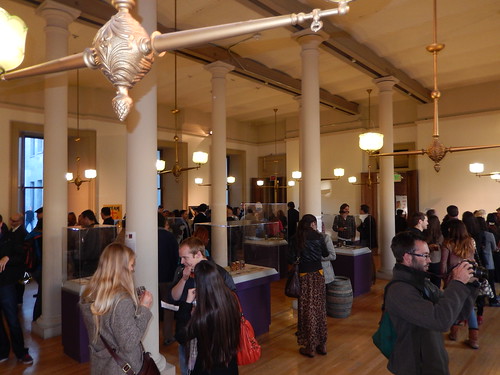
Thursday’s ad is for “Rheingold Beer,” from 1960. This ad was made for the Rheingold Brewery, which was founded by the Liebmann family in 1883 in New York, New York. At its peak, it sold 35% of all the beer in New York state. In 1963, the family sold the brewery and in was shut down in 1976. In 1940, Philip Liebmann, great-grandson of the founder, Samuel Liebmann, started the “Miss Rheingold” pageant as the centerpiece of its marketing campaign. Beer drinkers voted each year on the young lady who would be featured as Miss Rheingold in advertisements. In the 1940s and 1950s in New York, “the selection of Miss Rheingold was as highly anticipated as the race for the White House.” The winning model was then featured in at least twelve monthly advertisements for the brewery, beginning in 1940 and ending in 1965. Beginning in 1941, the selection of next year’s Miss Rheingold was instituted and became wildly popular in the New York Area and beyond. Janet E. Mick was Miss Rheingold 1961, and was born January 5, 1935. She was born in Westmont, N.J., but her parents later moved to Camden. Curiously, each of her three sisters also has a name beginning with the letter “J” and a middle name beginning with “E.” Her sisters include Joyce E., Judith E., and Jean E. After graduating from Camden High School, she worked for five years with New Jersey Bell Telephone in the Camden office, before becoming a stewardess for American Airlines. In between, she also enrolled at the American Academy of Dramatic Arts and Ballet in Philadelphia. While a stewardess, she became “Miss American Airlines” and appeared in ads for the airline. She also routinely flew back and forth between Los Angeles, so registered with a modeling agency in California and began accepting modeling jobs, including television commercials. So she entered the Miss Rheingold contest, hoping to supplement her income. She enjoys pizza and making homemade ice cream. In her spare time, she plays tennis, bowls and goes swimming. In September of 1962, the year after her reign, she married John Petersen Warwick, an Exec. VP of the ad agency Warwick & Legler, Inc. He was responsible for such memorable ads as the Timex Torture Test and Heineken and Seagram’s ads, among many others. He later was Chairman and CEO for 33 years of the prestigious advertising firm. The couple had two children. He passed away in 2016, but she appears to still be alive. In this promotional piece, from late 1960, Janet Mick is shown in a framed portrait as the new Miss Rheingold for 1961. These would have been given out to accounts selling Rheingold beer.


























